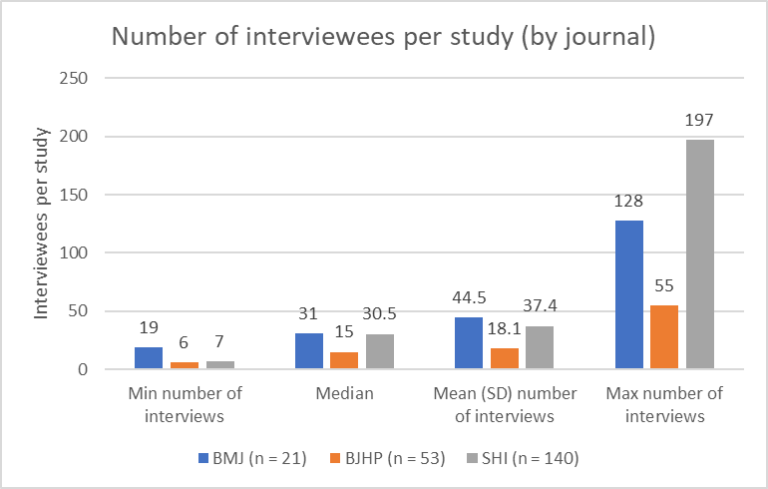
Hundreds of digital health startups attended this year’s HLTH conference, which was held last week in Las Vegas. These companies were seeking venture capital, new customers and some fresh insight about the healthcare industry.
But exploring the exhibit hall revealed that many of them were promising to do the same thing. For example, it was easy to stumble across several startups hawking clinical documentation tools, several showcasing telehealth platforms for behavioral health, and several promoting their chronic disease management platforms. These areas seem overcrowded, but there are some areas of the digital health startup space that may be a bit too barren.
During the conference, I spoke with some investors and digital health executives about the types of startups that they haven’t encountered yet — but would like to.
Here are some of their most interesting responses.
Startups to help transform research into innovation
Academic medical research is critical to the work that digital health leaders do — but this topic is not discussed much at industry events, noted Dan Shoenthal, chief innovation officer at University of Texas MD Anderson Cancer Center. He also said that he has noticed a lack of companies that are focused on advancing medical research and translating it into new tools for providers to use.
“There are not a lot of companies that have a focus on accelerating and advancing both the research and then the translation of that research into actual bedside tools. There’s some clinical trial matching tools and things like that, but there’s nothing that really focuses on the acceleration of research. It seems to be an ignored space,” he declared.
One of the investors I spoke with had a similar stance.
Abby Miller Levy, managing partner at Primetime Partners, said that the digital health industry “could do a better job” of bridging the gap between research and commercialization.
“The United States has the best research institutions in the world — but I don’t think we’re doing a great job connecting the dots,” she explained.
Frankly, researchers aren’t always well-suited for the commercial pitching and selling process, Miller Levy noted.
She said she would love to see tech developers create better ways that researchers can connect with business-minded founding teams. That way, these founding teams can step in to help put tools into practice in healthcare settings sooner rather than later.
Startups that helps patients stay engaged with their health
Todd Schwarzinger, partner at Cleveland Clinic Ventures, said that he wants to see more startups focused on helping patients manage their own health on a day-to-day basis.
“How do we give more tools to our patients? We deal with some very complex patients, and we have some of the best specialists in the world across our organization — but the ability to manage our patients through more digital tools is really exciting. It can keep them engaged in between visits with our specialists,” he explained.
Schwarzinger highlighted a recent partnership that Cleveland Clinic established in this vein. This month, the health system teamed up with Ayble Health, a digital health platform that helps GI patients manage their digestive health in between visits with their provider.
There are already startups that exist in this space, but Schwarzinger said there needs to be more in the future.
Most of the technology in the digital health market is deployed within the four walls of a hospital, added Regard CEO Eli Ben-Joseph. As the industry continues to innovate, he also said he would like to see more technology that keeps patients engaged with their health when they’re outside of their provider’s office.
“Imagine if you, as a patient, could get access to some of the data that you have in your own medical record and use that to get self-assessments of your health — and potentially even get diagnostics done for your own health, as more and more algorithms get FDA approvals,” Ben-Joseph remarked.
He noted that the type of solution he described likely won’t emerge until “quite a few years down the road.” Knowing that it may take a while, Ben-Joseph said that he thinks tech developers may want to start working on a product like that now.
Startups that can turn point solutions into platforms
The healthcare industry needs technology that can integrate all the point solutions that exist in the digital health world, pointed out Jason Hill, Ochsner Health’s innovation officer.
“I’d like to see an AI platform that would allow me to pop in a bunch of different models — and to do different scales and use cases that would then help me to drive adoption of those different models,” he explained.
Hill highlighted vision AI as an area where something like this could be helpful. When it comes to cameras in patient rooms, there are a lot of small, fragmented hardware and software solutions, he noted.
He is suggesting that a platform could combine these point solutions into a unified framework.
“Cameras in rooms: lots of problems, lots of hardware, lots of software, lots of AI. Can we create an aggregator that allows us to piece those puzzles together, but also have a single core that will act like a platform? We don’t see a lot of that,” Hill remarked.
Ochsner has tried to create this sort of aggregated platform using its Epic EHR as a foundation, but this is limiting because the health system is “building on someone else’s playground,” he added.
Another health system leader — Anika Gardenhire, chief digital and information officer at Ardent Health Services — agreed with Hill.
“The one thing I feel like I’m not necessarily seeing yet is what I would consider connector technologies or connector platforms,” she declared. “You have all of these point solutions that are here, and I think the magic of the ecosystem, and sort of the magic of what I hope large language models are, is that they connect across the ecosystem. They connect community care with payers, with providers and with life sciences.”
As AI continues to advance, Gardenhire said she would like to see a platform that acts as a connective tissue between different stakeholders.
For example, there are multiple healthcare stakeholders that struggle with the process of drug rebates, she pointed out. Various players in the healthcare ecosystem — patients, providers, payers, pharmacy benefit managers and drugmakers — grapple with managing these complex financial incentives.
Drug rebates are usually negotiated behind closed doors, obscuring the actual price paid by health systems and making it difficult for them to accurately predict costs and savings. The delayed nature of rebate payments can also cause cash flow problems.
There are solutions out there to help each individual stakeholder manage this process, but Gardenhire would like to see a platform that could aggregate these point solutions and “attack that workflow across the entire continuum of care.”
While many digital health startups are innovating within well-established categories, Gardenhire and the other executives mentioned above agree that there are still plenty of opportunities for new companies to transform underserved areas in healthcare — whether that be bridging the gap between research and commercialization, keeping patients engaged outside the clinic or unifying fragmented solutions into cohesive platforms.
Photo: HLTH






